Abstract
Serum neutralizing antibodies to polioviruses were titrated in serum samples from 182 police cadets aged 16-18 years before and, in 168 of the cadets, 6 weeks after vaccination with a single dose of oral polio vaccine (OPV). Faecal excretion of poliovirus was also followed. Vaccination histories were obtained and confirmed whenever possible. Pre-vaccination antibody could not be detected against type 1 in 9-3% cadets, against type 2 in 2-7% and against type 3 in 7-7%. Absence of antibody to at least one virus type was found in 14-3% of the cadets. In 93 cadets in whom vaccination histories could be confirmed 40 had received only inactivated polio vaccine (IPV) previously; of these 23% lacked antibody to at least one virus type, and they had less intestinal immunity to a challenge dose of OPV than those previously given OPV. Only two of the cadets known to have had OPV were non-immune - both had received a single dose following full courses of IPV. However, cadets who had received OPV had their last dose of vaccine more recently (average 4-6 years) than those who had received only IPV (all 12 years or more). The serum antibody response to a single booster dose of OPV, and the faecal excretion of each type of virus after vaccination, showed an inverse relation to the corresponding pre-vaccination antibody concentration. A single dose of OPV did not reliably boost the immunity of those who possessed adequate immunity, and a failure to respond was also observed in a proportion of the cadets with no detectable antibody, mostly in the case of type 3 antibody and particularly if antibody to types 1 or 2 virus was also absent. No evidence was obtained that intestinal immunity could be expected in the absence of detectable circulating antibody. The reasons for the absence of a serological response to OPV in some subjects are discussed and consideration is given to the practical significance of the findings. It is suggested that reinforcement of polio immunity at school-leaving is important, particularly at the present time when many of those aged 16-18 years will have been vaccinated only with IPV. A single dose of OPV is not ideal for this purpose, not only because a small proportion of persons are liable to be left unprotected, but also because failure to produce a reliable boost in persons with adequate immunity at the time of vaccination gives rise to the possibility that they may become susceptible later in adult life.
Full text
PDF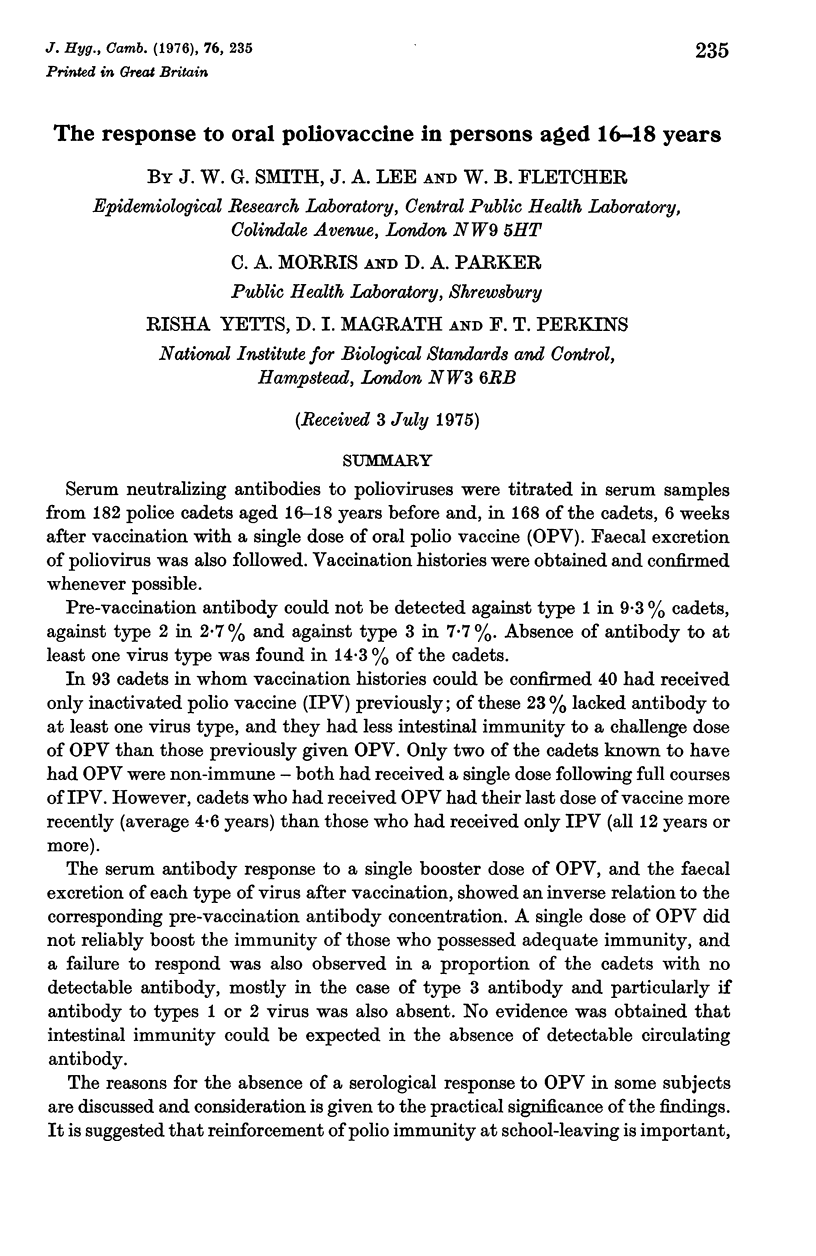
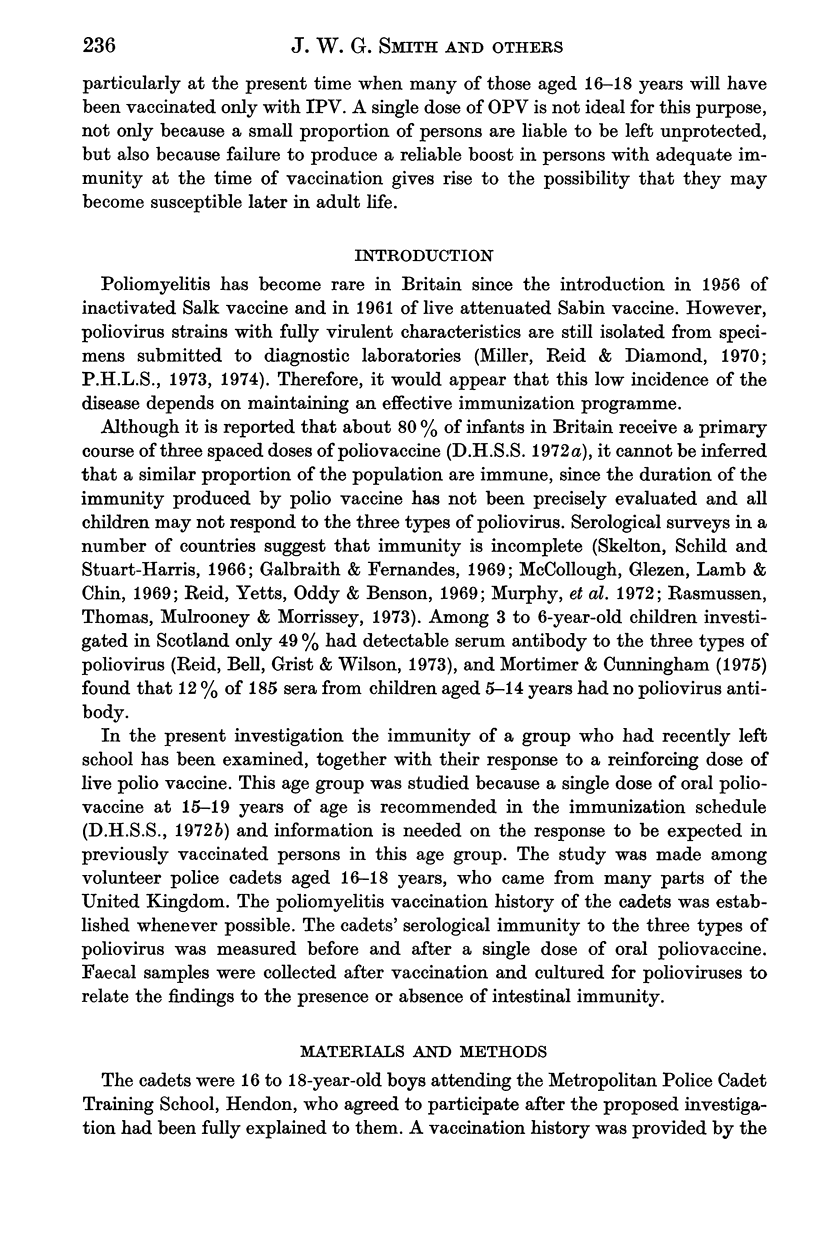
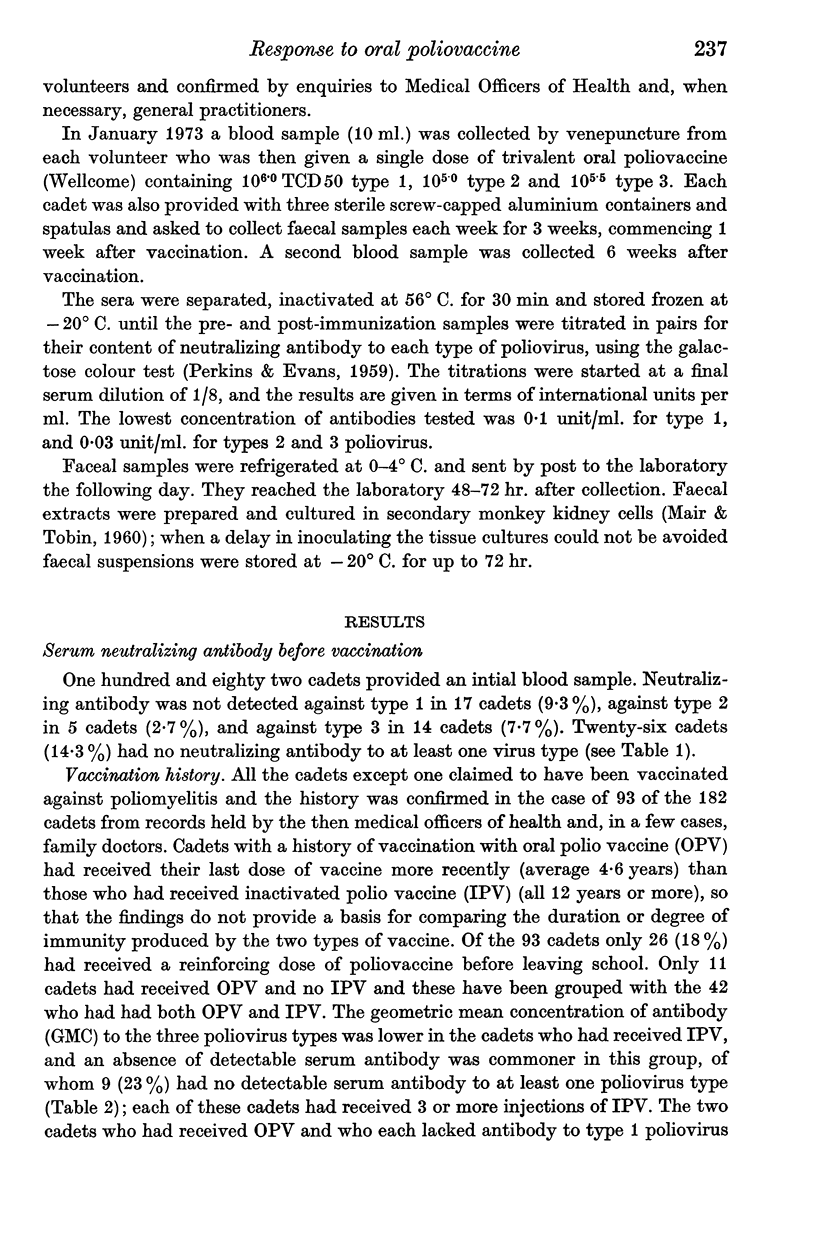
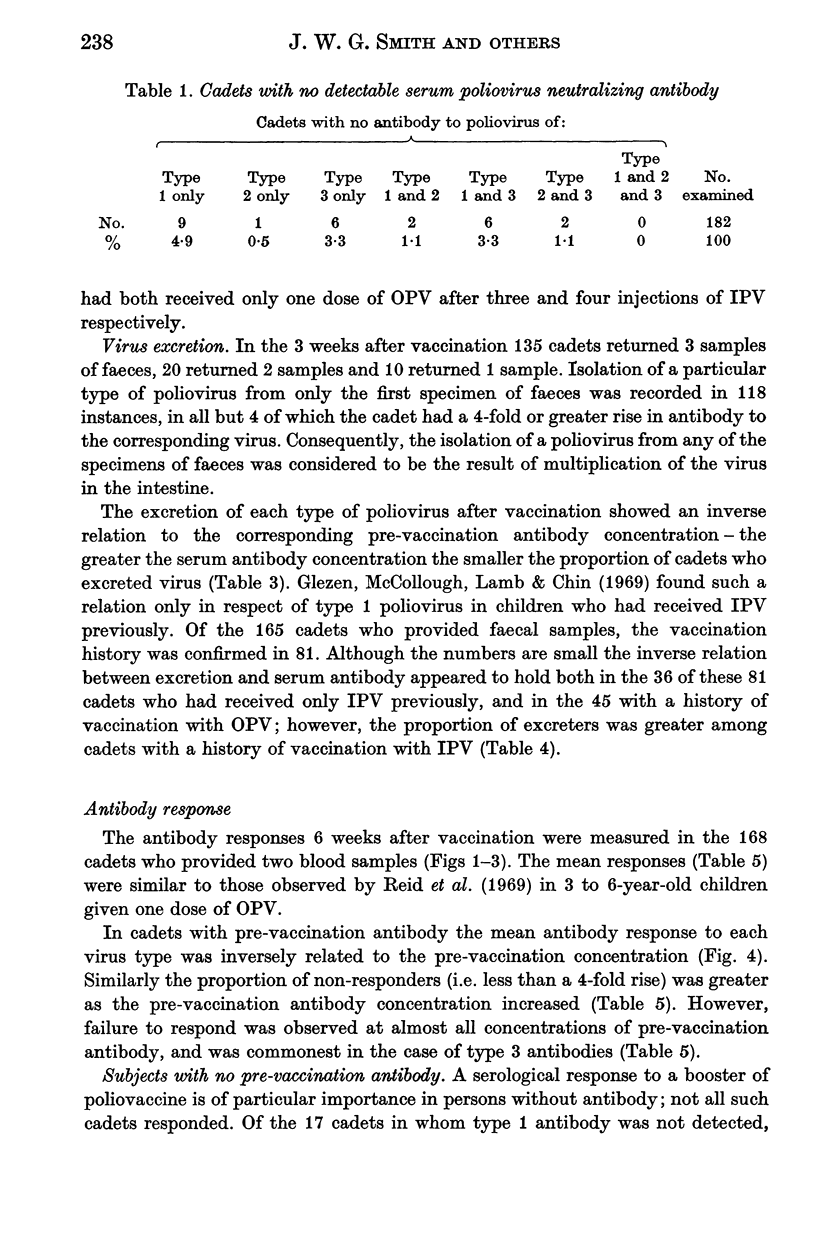
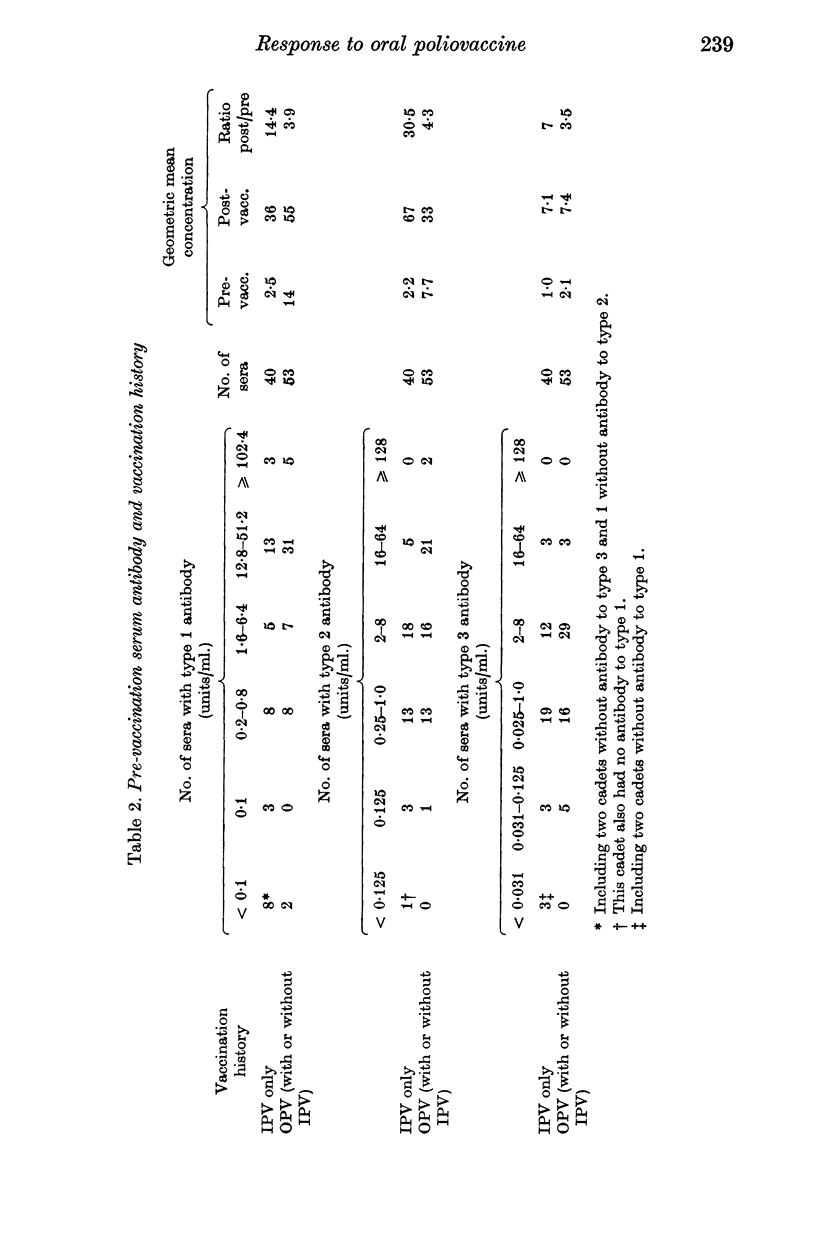
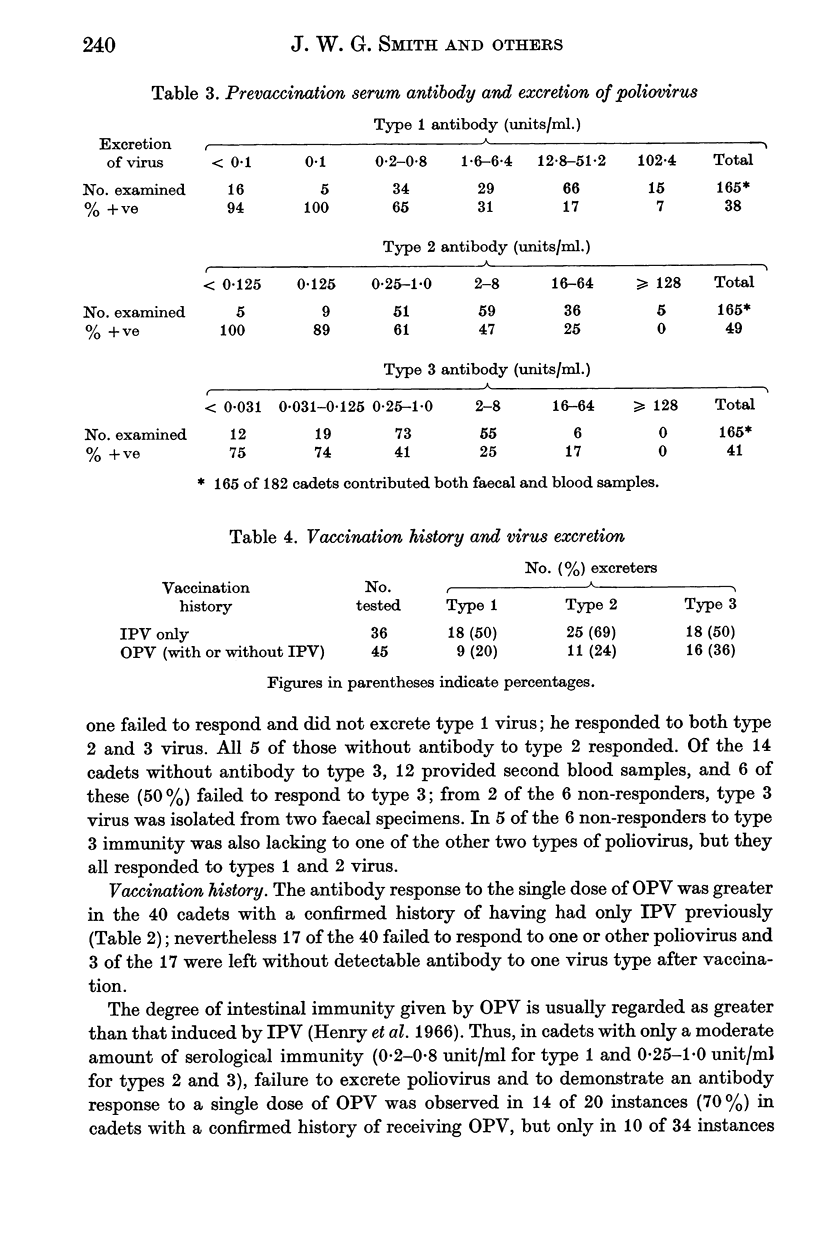
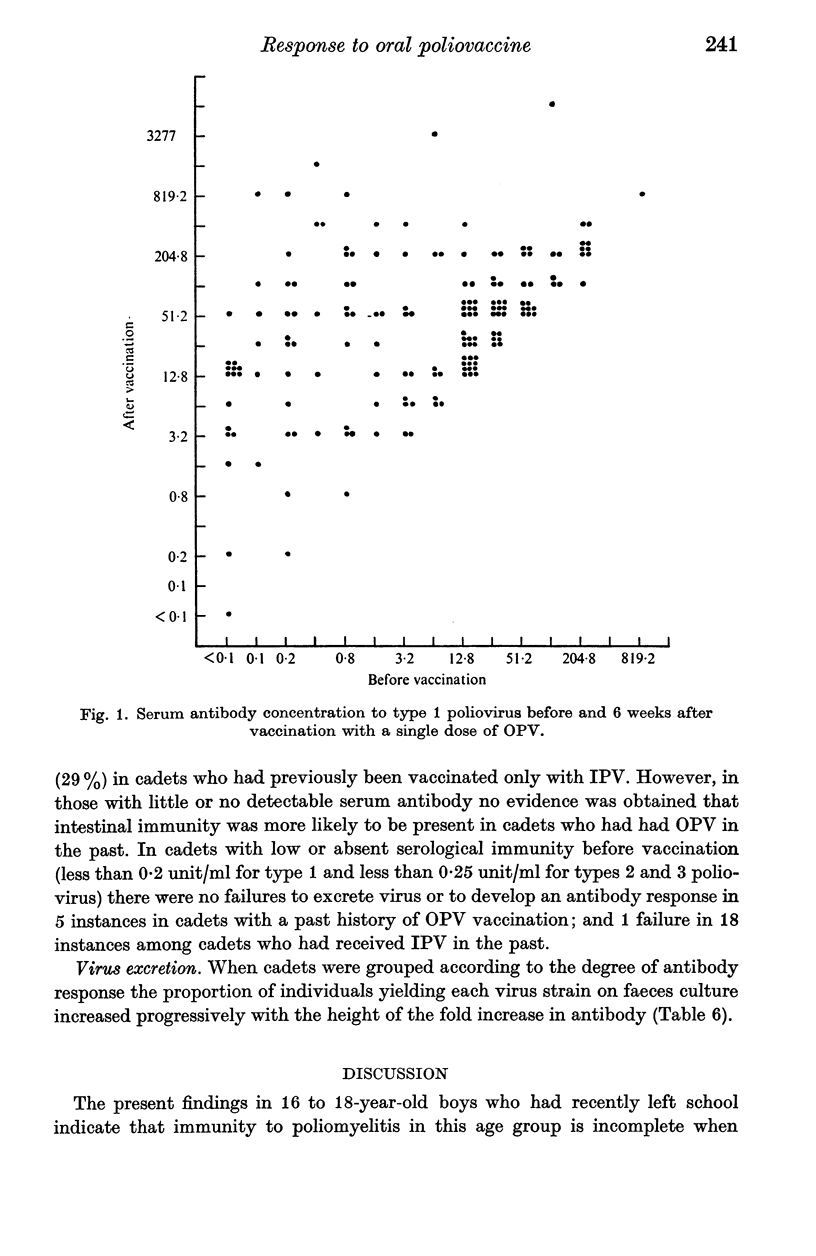
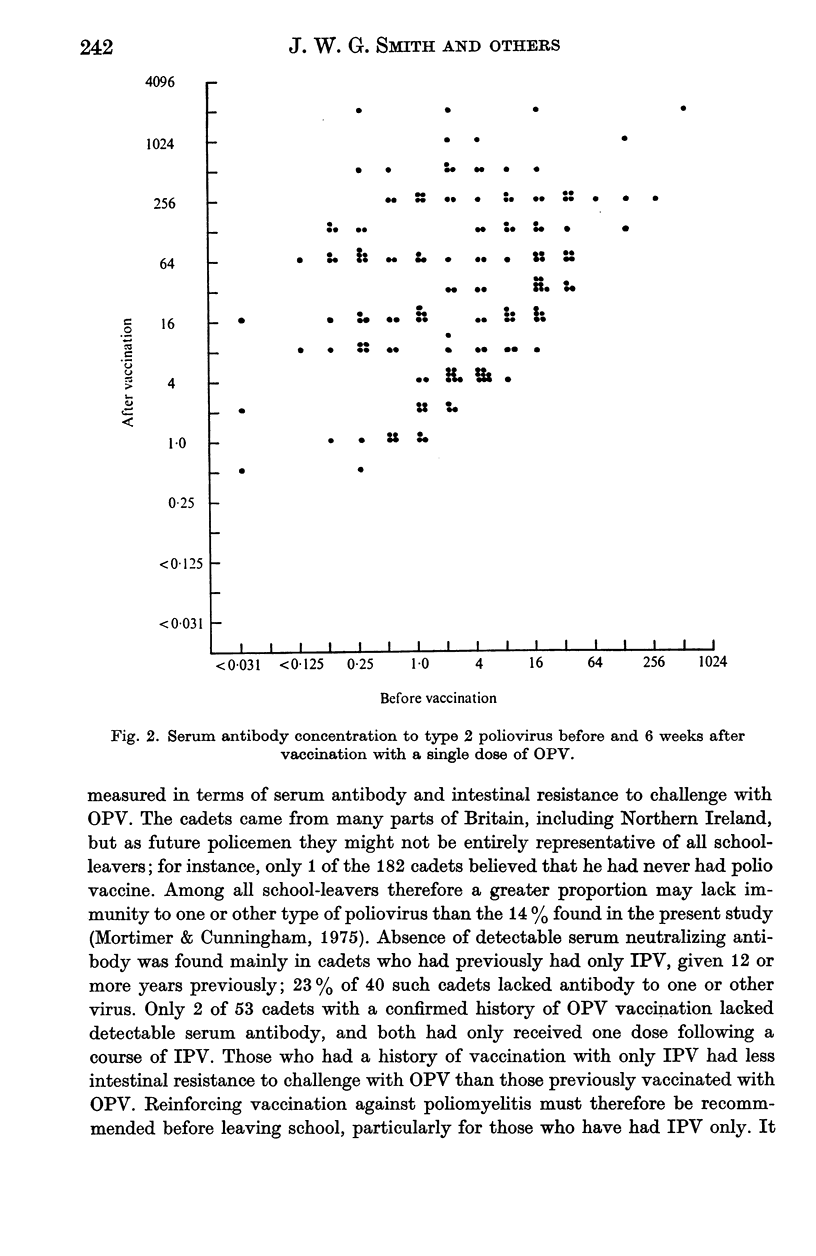
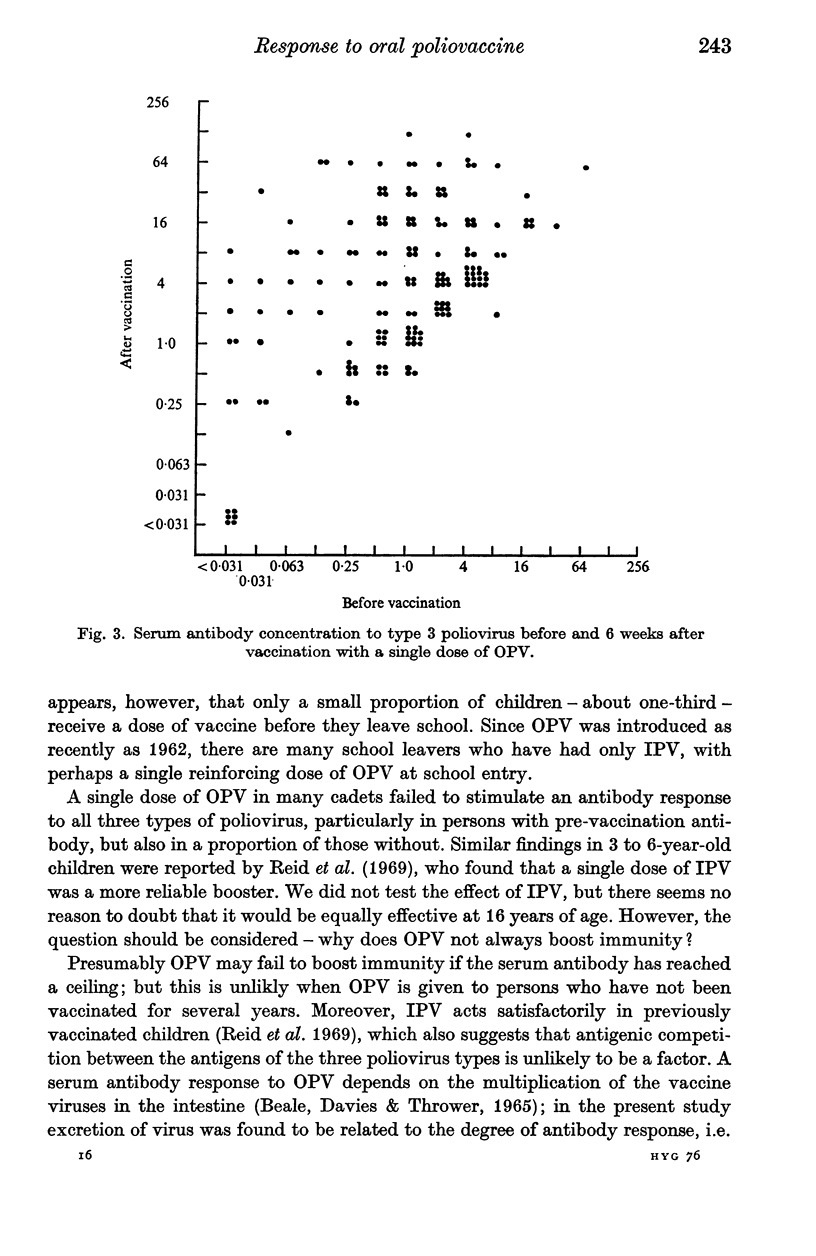
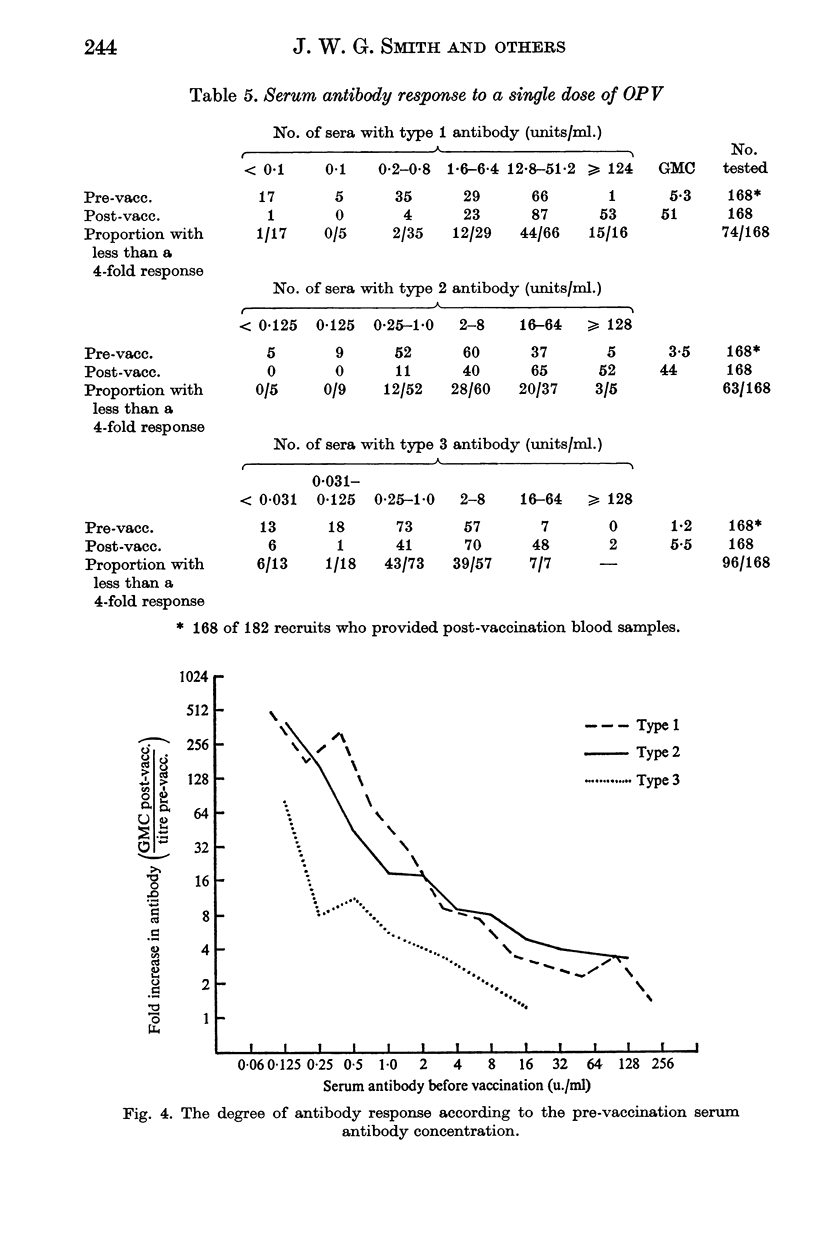
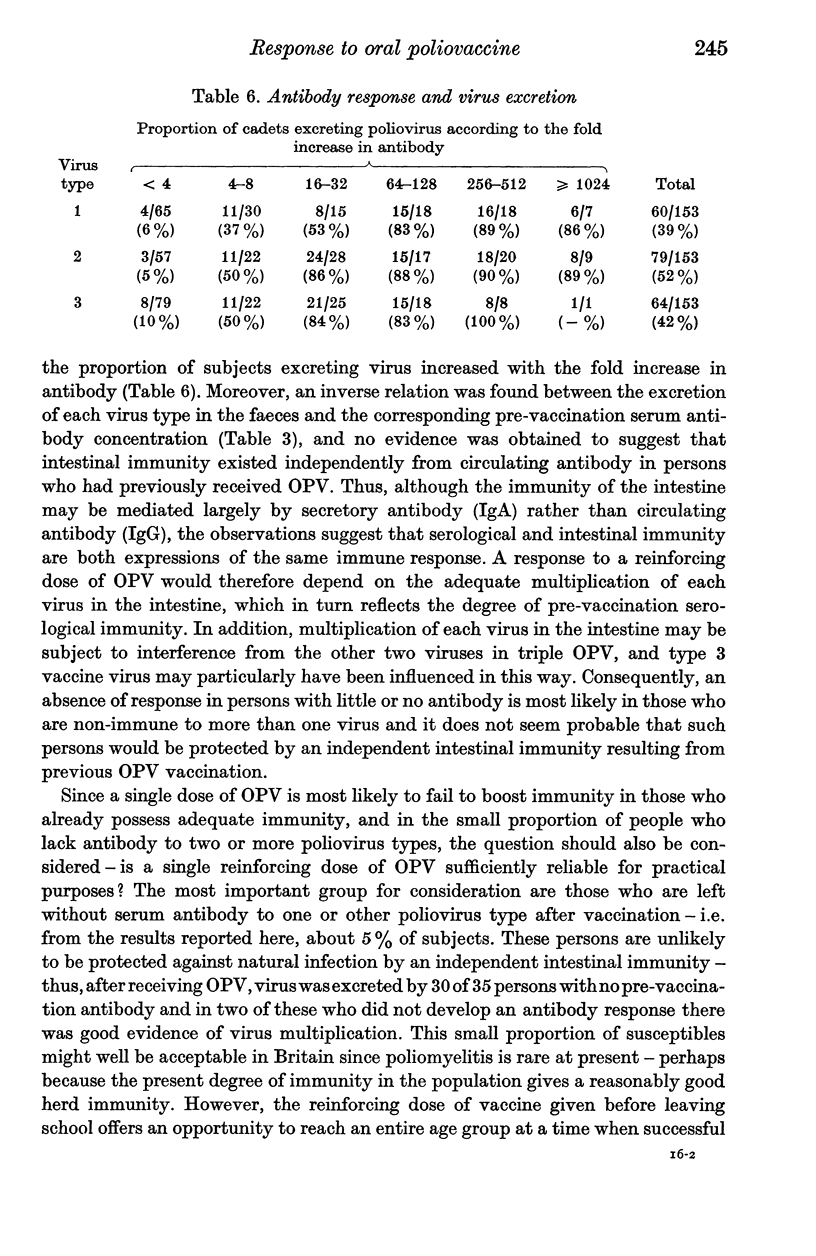
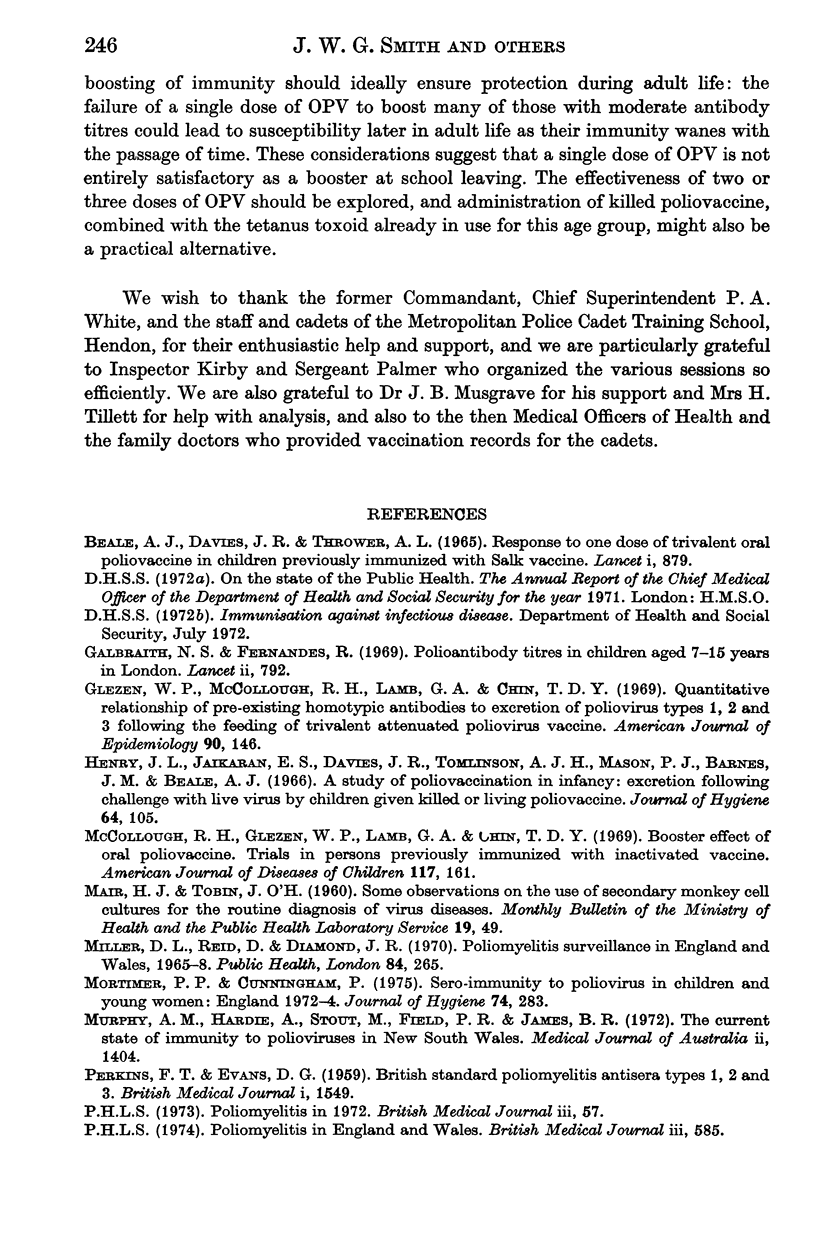
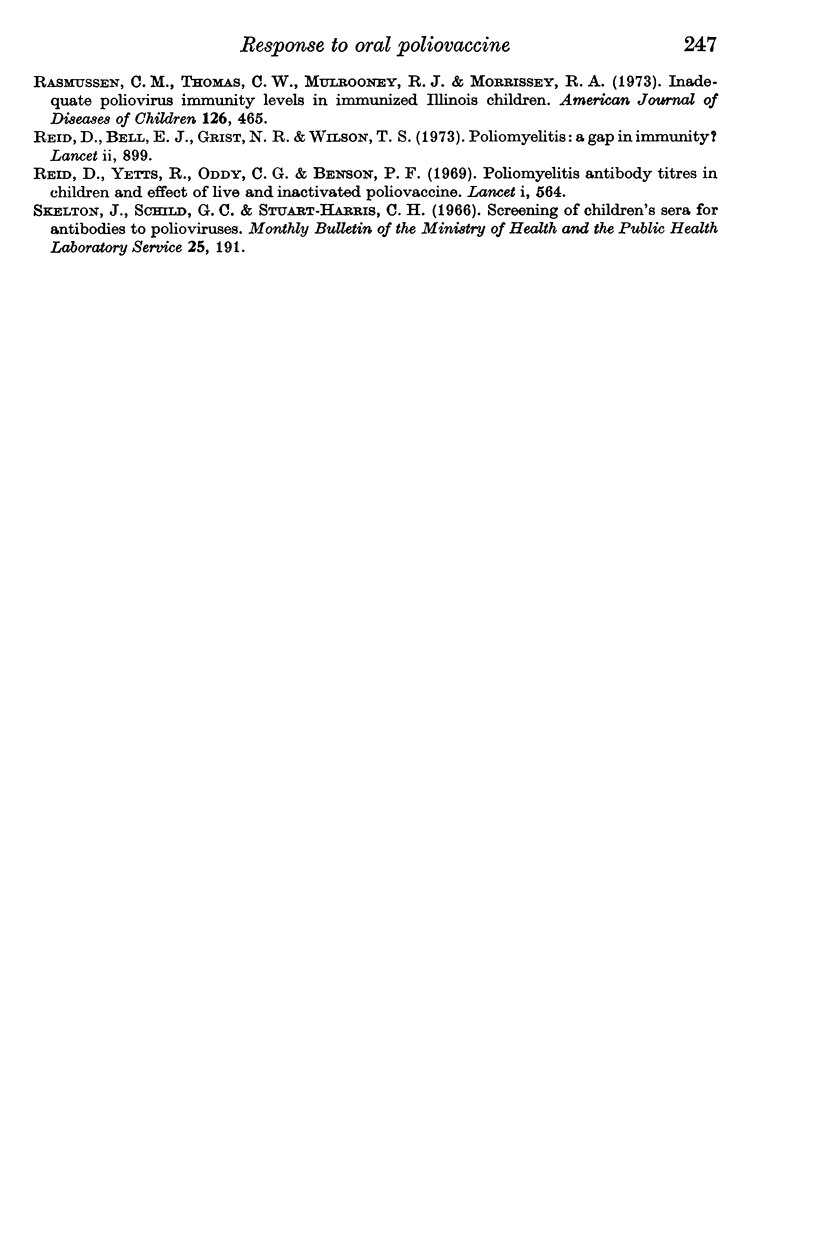
Selected References
These references are in PubMed. This may not be the complete list of references from this article.
- BEALE A. J., DAVIES J. R., THROWER A. L. RESPONSE TO ONE DOSE OF TRIVALENT ORAL POLIOVACCINE IN CHILDREN PREVIOUSLY IMMUNISED WITH SALK VACCINE: A COMPARISON OF LIQUID VACCINE AND A CAPSULE PRESENTATION. Lancet. 1965 Apr 24;1(7391):879–881. doi: 10.1016/s0140-6736(65)92618-8. [DOI] [PubMed] [Google Scholar]
- Galbraith N. S., Fernandes R. Polioantibody titres in children aged 7-15 years in London. Lancet. 1969 Oct 11;2(7624):792–793. doi: 10.1016/s0140-6736(69)90496-6. [DOI] [PubMed] [Google Scholar]
- Glezen W. P., McCollough R. H., Lamb G. A., Chin T. D. Quantitative relationship of preexisting homotypic antibodies to excretion of poliovirus types 1, 2, and 3 following the feeding of trivalent attenuated poliovirus vaccine. Am J Epidemiol. 1969 Aug;90(2):146–156. doi: 10.1093/oxfordjournals.aje.a121058. [DOI] [PubMed] [Google Scholar]
- Henry J. L., Jaikaran E. S., Davies J. R., Tomlinson A. J., Mason P. J., Barnes J. M., Beale A. J. A study of poliovaccination in infancy: excretion following challenge with live virus by children given killed or living poliovaccine. J Hyg (Lond) 1966 Mar;64(1):105–120. doi: 10.1017/s0022172400040389. [DOI] [PMC free article] [PubMed] [Google Scholar]
- McCollough R. H., Glezen W. P., Lamb G. A., Chin T. D. Booster effect of oral poliovaccine. Trials in persons previously immunized with inactivated vaccine. Am J Dis Child. 1969 Feb;117(2):161–168. [PubMed] [Google Scholar]
- Miller D. L., Reid D., Diamond J. R. Poliomyelitis surveillance in England and Wales, 1965-8. Public Health. 1970 Sep;84(6):265–285. doi: 10.1016/s0033-3506(70)80065-8. [DOI] [PubMed] [Google Scholar]
- Mortimer P. P., Cunningham P. Sero-immunity to poliovirus in children and young women: England 1972-4. J Hyg (Lond) 1975 Apr;74(2):283–287. doi: 10.1017/s0022172400024359. [DOI] [PMC free article] [PubMed] [Google Scholar]
- Murphy A. M., Hardie A., Stout M., Field P. R., James B. R. The current state of immunity to polioviruses in New South Wales. Med J Aust. 1972 Dec 16;2(25):1404–1408. doi: 10.5694/j.1326-5377.1972.tb92968.x. [DOI] [PubMed] [Google Scholar]
- Rasmussen C. M., Thomas C. W., Mulrooney R. J., Morrissey R. A. Inadequate poliovirus immunity levels in immunized Illinois children. Am J Dis Child. 1973 Oct;126(4):465–469. doi: 10.1001/archpedi.1973.02110190387005. [DOI] [PubMed] [Google Scholar]
- Reid D., Bell E. J., Grist N. R., Wilson T. S. Poliomyelitis: A gap in immunity? Lancet. 1973 Oct 20;2(7834):899–900. doi: 10.1016/s0140-6736(73)92022-9. [DOI] [PubMed] [Google Scholar]
- Reid D., Yetts R., Oddy C. G., Benson P. F. Poliomyelitis antibody titres in children and effect of live and inactivated poliovaccine. Lancet. 1969 Mar 15;1(7594):564–566. doi: 10.1016/s0140-6736(69)91970-9. [DOI] [PubMed] [Google Scholar]
- Skelton J., Schild G. C., Stuart-Harris C. H. Screening of children's sera for antibodies to polioviruses. Mon Bull Minist Health Public Health Lab Serv. 1966 Sep;25:191–193. [PubMed] [Google Scholar]


